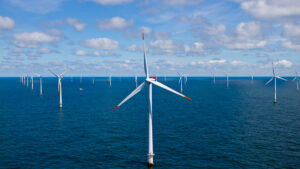Maritime forces from Canada, Japan, and the United States concluded exercises in the South China Sea, Oct. 1, demonstrating a shared commitment to a free and open Indo-Pacific.
The Japan Maritime Self-Defense Force (JMSDF) led the exercise in support of their Indo-Pacific deployment; the exercises included JMSDF’s JS Izumo (DDH 183) and JS Takanami (DD 110). The multi-lateral training for the three maritime forces served to strengthen skills in maritime operations, anti-submarine warfare operations, air warfare operations, live-fire missile events, and advanced maneuvering scenarios.
“Through increased practical exercise, together we improved tactical capabilities and interoperability between the JMSDF, the U.S. Navy and the Royal Canadian Navy, and we promoted cooperative relationship of Japan-U.S.-Canadian naval forces in order to realize a Free and Open Indo-Pacific,” said Rear Adm. HIRATA Toshiyuki, commanding officer of Escort Flotilla 4.
Representing the U.S. Navy was Arleigh Burke-class guided-missile destroyer USS Higgins (DDG 76) and fleet replenishment-oiler USNS Rappahannock (T-AO 204).
“Participating in multinational operations over the last month provided a fantastic opportunity to work with our friends and allies in the South China Sea,” said Cmdr. Joseph McGettigan, commanding officer of USS Higgins.
“The seamless interoperability between all ships demonstrates the strength of our alliances and goes a long way to promote a free and open Indo-pacific. Thank you to the JMSDF for leading a well-run and professional operation!”
Canada was represented by HMCS Winnipeg (FFH 338) and HMCS Vancouver (FFH 331). “It has been a pleasure to sail with our partners and allies over the past month,” said Cmdr. Kevin Whiteside, HMCS Vancouver commanding officer.
“Working together, we were able to leverage each other’s experience and familiarity operating in the area and build upon it for follow-on deployments. Supporting each other’s separate, yet similar, deployments to the Indo-Pacific demonstrates our common goal of supporting peace, security and prosperity in the region.”
Higgins is assigned to Commander, Task Force 71/Destroyer Squadron (DESRON) 15, the Navy’s largest forward-deployed DESRON and the U.S. 7th fleet’s principal surface force.
U.S. 7th Fleet is the largest forward-deployed fleet in the world, and with the help of a network of alliances and partners from 35 other maritime-nations, the U.S. Navy has operated in the Indo-Pacific region for more than 70 years, providing credible, ready forces to help preserve peace and prevent conflict.
Photo credit: Mass Communication Specialist 1st Class Donavan K. Patubo. Izumo-class multi-purpose destroyer JS Izumo (DDH 183) cruises in formation with Arleigh Burke-class guided-missile destroyer USS Higgins (DDG 76) while conducting routine operations in the South China Sea, Oct. 1.










